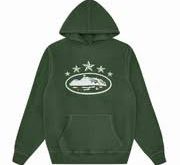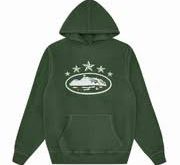Filler metals like E7018 welding electrodes are a popular option since materials utilized for structural applications have remained conducive to the process throughout time. These stick electrodes have the low hydrogen levels required to avoid problems like cracking, as well as the chemical characteristics required for the applications. Additionally, they give the right mechanical qualities for these tasks; for example, filler metals with a tensile strength of 70,000 psi are needed for the majority of steel used in structural applications. Stick electrodes 7018 welding rod satisfy such requirements.
Characteristics
E7018 stick electrodes are an ideal option for structural steel projects because of their smooth, steady arc, as well as their minimal spatter levels. As these apps need close heat input monitoring and are usually time-sensitive. It’s vital to use a filler metal that allows the welder to control the arc well and reduces the need for post-weld cleaning. Any time spent fixing or cleaning welds detracts from productivity.
These stick electrodes provide good penetration, allowing welders to potentially prevent weld defects such as lack of fusion with proper technique. They also provide high deposition rates, enabling welders to increase the amount of weld metal in the joint quickly. The addition of iron powder to the stick electrode’s coating enables this feature to be achieved. Manganese and silicon, required at specific levels in all E7018 stick electrodes, offer unique benefits to these products.
Classification And Designators
The American Welding Society has classified E7018 stick electrodes, just like any other filler metal. According to their nomenclature, the “E” designates a stick electrode, the “1” designates that it can be used in any welding position, and the “8” designates the electrode’s low-hydrogen coating, the medium penetration it offers, and the current types needed for operation. The filler metal provides 70,000 psi of tensile strength.
Extra designators, like H4 or H8, can be applied to E7018 stick electrodes in addition to the usual AWS categorization. The quantity of diffusible hydrogen that the stick electrode deposits in the weld is indicated by these designators. For instance, H4 denotes that there is 4 ml or less of diffusible hydrogen in the result for every 100 g of weldment. In a similar vein, the stick electrode with the H8 designator has 8 ml or less of diffusible hydrogen per 100 weldment.
Operation
E7018 stick electrodes are intended for use with a power source that offers either an AC or a DC current. In AC welding, the arc remains stable by using added arc stabilizers and/or iron powder in the filler metals’ coating, allowing for consistency as the power source switches between alternating currents at a frequency of up to 120 times per second.
The welds made using an E7018 rod electrode may not be as smooth due to the constant alterations in current direction. On the other hand, using a DCEP current in welding can simplify arc control and result in a more attractive weld bead due to the consistent flow direction of the current. Following the manufacturer’s recommendations for the specified E7018 stick electrode diameter is crucial to achieve optimal outcomes. Approximations for these parameters are as follows:
- 3/32 inch – 80 to 100 amps
• 1/8 inch – 90 to 150 amps
• 5/32 inch –110 to 230 amps
• 3/16 inch – 150 to 300 amps
• 7/32 inch – 220 to 350 amps
• 1/4 inch – 270 to 380 amps
Techniques
Using the correct technique is crucial when welding with an E7018 stick electrode, just as with any other welding process. To achieve proper weld penetration with an E7018 stick electrode, ensure a suitable leading angle and drag the electrode along the weld joint. For welding vertically upward, it’s best to go with a 3 to 5-degree tilt, and tossing in a little weaving action can work pretty well too.
When welding in flat or horizontal positions, it is important to control the arc length by keeping the stick electrode as close as possible to the weld puddle. By doing this, you can reduce the chances of porosity occurring. A helpful guideline is to keep the width of the weld bead around two and a half times the size of the core wire in the stick electrode for flat and horizontal welding tasks. To achieve good results when welding in the vertical up position, aim for a weld bead width that is approximately two and a half to three times larger than the core wire.
Advantages and Disadvantages
The 7018 welding rod has several advantages, including:
Highly stable:
The 7018 welding rod produces a smooth, stable arc that’s easy to control.
Low spatter:
The rod produces minimal spatter, reducing the need for post-weld cleanup.
Quiet operation:
The 7018 welding rod operates at a reduced noise level, making it ideal for welders who work in confined spaces or have noise restrictions.
Crack-resistant:
The low-hydrogen coating on the rod reduces the risk of cracking and porosity.
All-position welding:
The 7018 welding rod can be used in all welding positions, including flat, horizontal, vertical, and overhead.
Cold temperature performance:
The rod performs well at cold or freezing temperatures, making it an excellent choice for outdoor welding projects.
However, the 7018 welding rod also has some disadvantages, including:
Minimal penetration capacity:
The rod is not suitable for medium or deep penetration applications.
Not suitable for high-strength steel:
Because of its not-so-great tensile strength, the 7018 welding rod isn’t really a good choice for fusing high-strength steel.
Amperage Range
The amperage range for the 7018 welding rod depends on the diameter of the rod. Here are some general guidelines:
7/32 inch: 220 to 350 amps
1/4 inch: 270 to 380 amps
5/32 inch: 200 to 320 amps
It’s essential to follow the manufacturer’s recommended amperage range to ensure optimal performance and prevent overheating.
Conclusion
In short, 7018 welding rods are pretty much the go-to for jobs that need some serious strength. The price tag on these rods can change based on things like the brand, their size, and how many you buy. If you wanna save a few bucks on 7018 welding rods. It helps to snag clearance deals, compare prices here and there, and keep an eye out for sales. Understanding the cost of 7018 welding rods can assist both amateur and expert welders. In making informed purchase choices for optimal results in their welding tasks.
Read More ( CLICK HERE )
 Daily Blogger News Stay updated with the latest trends and insights. Your reliable source for daily updates and information.
Daily Blogger News Stay updated with the latest trends and insights. Your reliable source for daily updates and information.







